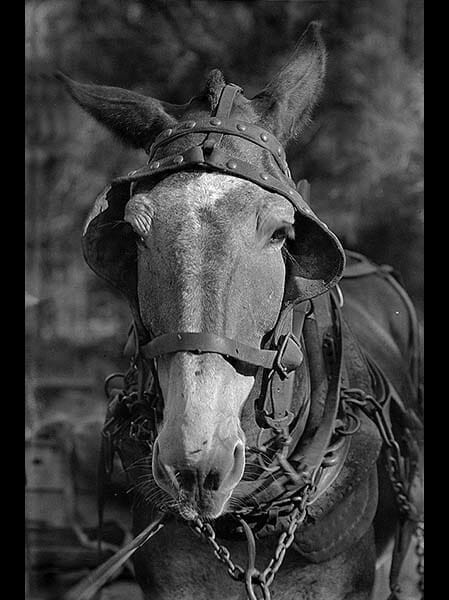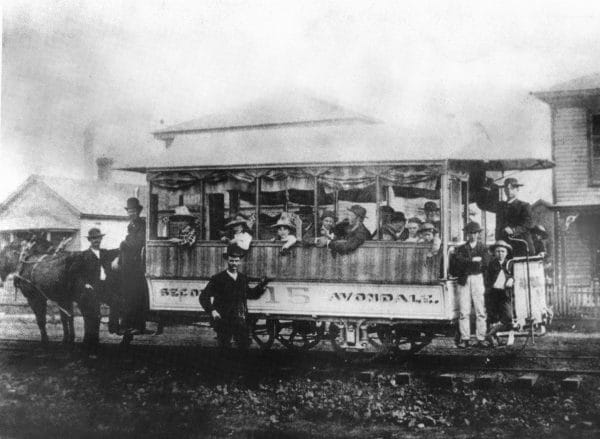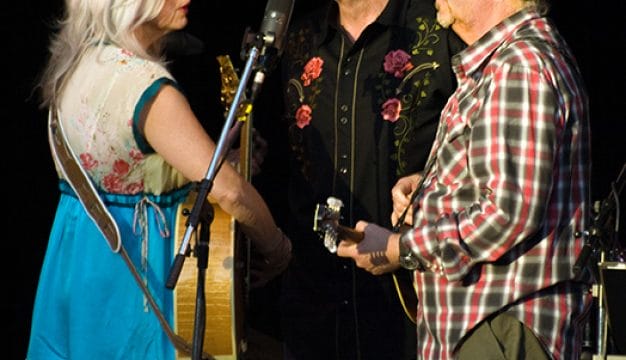Mules
For much of its history, Alabama was mainly an agricultural state where many farm tasks were powered by draft animals. Whereas both horses and mules worked on Alabama plantations and farms, mules, renowned for their hardiness, came to be the most important work animal in the state from the late nineteenth century until they were replaced around the middle of the twentieth century by machines.
 Hale County Mule
Mules are hybrid animals, the offspring of a male donkey, also called a jack, and a female horse, or mare. Both male and female offspring are produced, but both are sterile. From the jack, the mule receives long ears, hardiness, and surefootedness. The mare contributes size and alertness. Mules were classified based mainly on size—mining mules, cotton mules, sugar mules, farm mules, and draft mules—with mining mules being the smallest and draft mules the largest. Mining mules, which worked in coal mines, might weigh only 600 pounds, whereas draft mules, which worked the state’s heavy soils and hauled trees from forests, could tip the scales at 1,800 pounds. The mule’s type or category depended upon the type of work they generally performed. Cotton mules, for example, tended to be smaller because they often pulled plows in light soil, and farmers did not want to feed an animal that was larger than they needed. Mules performed many duties on farms, including pulling plows and wagons.
Hale County Mule
Mules are hybrid animals, the offspring of a male donkey, also called a jack, and a female horse, or mare. Both male and female offspring are produced, but both are sterile. From the jack, the mule receives long ears, hardiness, and surefootedness. The mare contributes size and alertness. Mules were classified based mainly on size—mining mules, cotton mules, sugar mules, farm mules, and draft mules—with mining mules being the smallest and draft mules the largest. Mining mules, which worked in coal mines, might weigh only 600 pounds, whereas draft mules, which worked the state’s heavy soils and hauled trees from forests, could tip the scales at 1,800 pounds. The mule’s type or category depended upon the type of work they generally performed. Cotton mules, for example, tended to be smaller because they often pulled plows in light soil, and farmers did not want to feed an animal that was larger than they needed. Mules performed many duties on farms, including pulling plows and wagons.
 Birmingham Mule-drawn Streetcar, ca. 1887
Mules came to be favored over horses in the second half of the nineteenth century because they developed a reputation for hardiness and the ability to take care of themselves. These characteristics often translated into a reputation for stubbornness because mules would not work beyond their physical limits, a trait that helped them survive when there was little or no incentive for anyone to take care of them. Many southern farmers recounted that they owned and worked a mule for 20 years or more. Additionally, planters viewed mules as cheaper than horses to feed and maintain because mules could often survive on low-quality grain and hay. Stories abound of mules that would choose brambles over good quality hay, but such stories are more myth than reality. Mules respond to good food and quality care the same as horses do.
Birmingham Mule-drawn Streetcar, ca. 1887
Mules came to be favored over horses in the second half of the nineteenth century because they developed a reputation for hardiness and the ability to take care of themselves. These characteristics often translated into a reputation for stubbornness because mules would not work beyond their physical limits, a trait that helped them survive when there was little or no incentive for anyone to take care of them. Many southern farmers recounted that they owned and worked a mule for 20 years or more. Additionally, planters viewed mules as cheaper than horses to feed and maintain because mules could often survive on low-quality grain and hay. Stories abound of mules that would choose brambles over good quality hay, but such stories are more myth than reality. Mules respond to good food and quality care the same as horses do.
A supply system to move the animals from mule-producing states such as Tennessee and Kentucky to Alabama and other Deep South states developed along established trade routes at first, with mules moving on foot accompanied by mule traders, who purchased a few mules at a time from farmers along the routes. Later, railroads moved large numbers of mules from mule-producing states to the Deep South to be sold in groups to local mule traders.
 Mule Cart
Plantation owners first adopted mules for use in their fields, typically driven by enslaved workers. After the Civil War, mules rose to an unprecedented level of importance in Alabama and were used by both black and white farmers. Mules plowed fields, pulled wagons loaded with cotton and farm families to town, hauled firewood, and performed other duties as farmers saw fit. Mules played a central economic role in farm life, and the loss of a mule to injury or disease could create a major economic hardship for a farmer and his family. Ownership of a mule also helped determine the details of a sharecropper‘s contract with the landowner. If a farmer owned his own mule, he could work out a more favorable financial arrangement with the landowner. Mules also were used in the timber and mining industries, as well as in towns and cities to pull delivery wagons, but by far most Alabama mules worked on farms. The 1910 Agricultural Census reported that nearly 60 percent of Alabama’s farms had mules, whereas about 35 percent had horses. Mules numbered almost 156,000; horses numbered 91,500. By 1930, when the mule population peaked, mules outnumbered horses 332,000 to 65,000. In monetary terms, Alabama mules were valued in 1930 at $32.4 million, or about $97.00 per animal, whereas horses in the state were valued at only $4.3 million, or about $66.00 per animal.
Mule Cart
Plantation owners first adopted mules for use in their fields, typically driven by enslaved workers. After the Civil War, mules rose to an unprecedented level of importance in Alabama and were used by both black and white farmers. Mules plowed fields, pulled wagons loaded with cotton and farm families to town, hauled firewood, and performed other duties as farmers saw fit. Mules played a central economic role in farm life, and the loss of a mule to injury or disease could create a major economic hardship for a farmer and his family. Ownership of a mule also helped determine the details of a sharecropper‘s contract with the landowner. If a farmer owned his own mule, he could work out a more favorable financial arrangement with the landowner. Mules also were used in the timber and mining industries, as well as in towns and cities to pull delivery wagons, but by far most Alabama mules worked on farms. The 1910 Agricultural Census reported that nearly 60 percent of Alabama’s farms had mules, whereas about 35 percent had horses. Mules numbered almost 156,000; horses numbered 91,500. By 1930, when the mule population peaked, mules outnumbered horses 332,000 to 65,000. In monetary terms, Alabama mules were valued in 1930 at $32.4 million, or about $97.00 per animal, whereas horses in the state were valued at only $4.3 million, or about $66.00 per animal.
Most Alabama farmers did not raise mules; instead, they purchased them from outside suppliers because it was cheaper and less trouble for the most part to buy a finished working mule. Mule raising required a jack, and this animal had no productive purpose other than mating with mares. Most farmers also needed to spend their time and energy on raising cash crops. As the mule supply from the South and Midwest diminished during the twentieth century, some local mule-breeding programs, beginning in the 1930s and overseen by county farm demonstration agents, yielded increasing numbers of home-bred mules. As more and more farmers shifted to tractors, however, the mule supply became less of a concern, and such programs disappeared.
 Draft Mules
Mules played a key role in Alabama’s economy, but they also came to symbolize important cultural aspects of the state and the South as a whole. Mules were always identified with hard work, and thus low social status. As hybrids, mules were engineered animals, and antebellum planters saw mules as an innovation that served to strengthen the plantation agriculture system. Through much of the twentieth century, mules signified the hardiness of a rural culture beset by adversity. By the 1950s, however, mules had instead come to symbolize an inefficient agricultural system that had no place in a rapidly modernizing nation. Thus, they came to represent all that was backward about the South: racism, poverty, and resistance to change.
Draft Mules
Mules played a key role in Alabama’s economy, but they also came to symbolize important cultural aspects of the state and the South as a whole. Mules were always identified with hard work, and thus low social status. As hybrids, mules were engineered animals, and antebellum planters saw mules as an innovation that served to strengthen the plantation agriculture system. Through much of the twentieth century, mules signified the hardiness of a rural culture beset by adversity. By the 1950s, however, mules had instead come to symbolize an inefficient agricultural system that had no place in a rapidly modernizing nation. Thus, they came to represent all that was backward about the South: racism, poverty, and resistance to change.
Mules disappeared quite rapidly from Alabama farms after World War II in the face of improved technologies for planting, raising, and harvesting cotton. Tractors, chemical herbicides and pesticides, and mechanical cotton pickers removed the last barriers to mechanization. Only about 5,000 tractors were used on Alabama farms in 1930, but that number increased to nearly 46,000 by 1950. By the 1960s, mules were viewed more as curiosities from an earlier era than as work animals.
 Young Man and Mule, ca. 1980
For a century, mules were an integral component of rural life in Alabama and across the Deep South. During the years that mules predominated, almost anyone who lived or worked in Alabama had some sort of direct or indirect contact with mules. Mule use cut across racial, gender, social, and economic lines to form a constant in southern life. Stories about mule idiosyncrasies abounded in folk culture. In Alabama, mules even entered into the political vocabulary: Big Mules denoted political and industrial interests that sought to dominate the state for their own gain. And Negro Leagues baseball star George “Mule” Suttles earned his nickname for his toughness and his former work as a miner.
Young Man and Mule, ca. 1980
For a century, mules were an integral component of rural life in Alabama and across the Deep South. During the years that mules predominated, almost anyone who lived or worked in Alabama had some sort of direct or indirect contact with mules. Mule use cut across racial, gender, social, and economic lines to form a constant in southern life. Stories about mule idiosyncrasies abounded in folk culture. In Alabama, mules even entered into the political vocabulary: Big Mules denoted political and industrial interests that sought to dominate the state for their own gain. And Negro Leagues baseball star George “Mule” Suttles earned his nickname for his toughness and his former work as a miner.
Ironically, mules were so common that their place in southern life has been somewhat overlooked, yet they were integral to Alabama’s economy and history. Though mules are no longer economically essential to farms and other industries in the state, people continue to raise them and use them in living history settings, agricultural and cultural fairs, and for pleasure riding. The communities of Winfield, Marion County and Ider, DeKalb County hold an annual Mule Day festival.
Additional Resources
Ellenberg, George B. Mule South to Tractor South: Mules, Machines, and the Transformation of the Cotton South. Tuscaloosa: University of Alabama Press, 2007.



